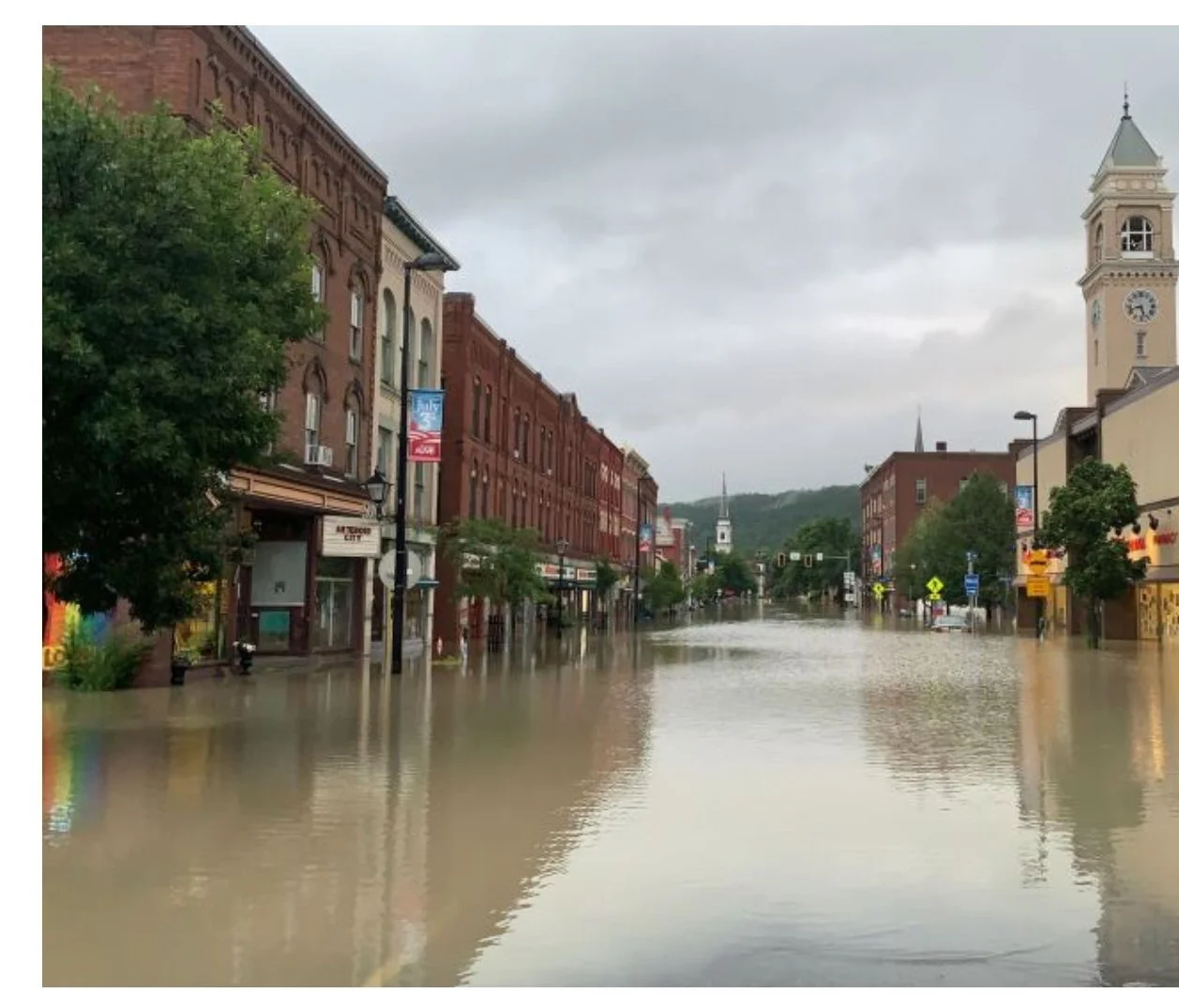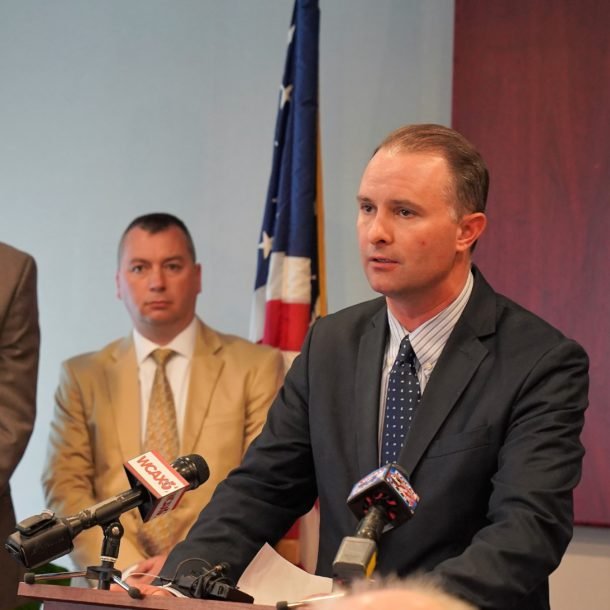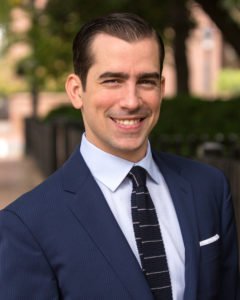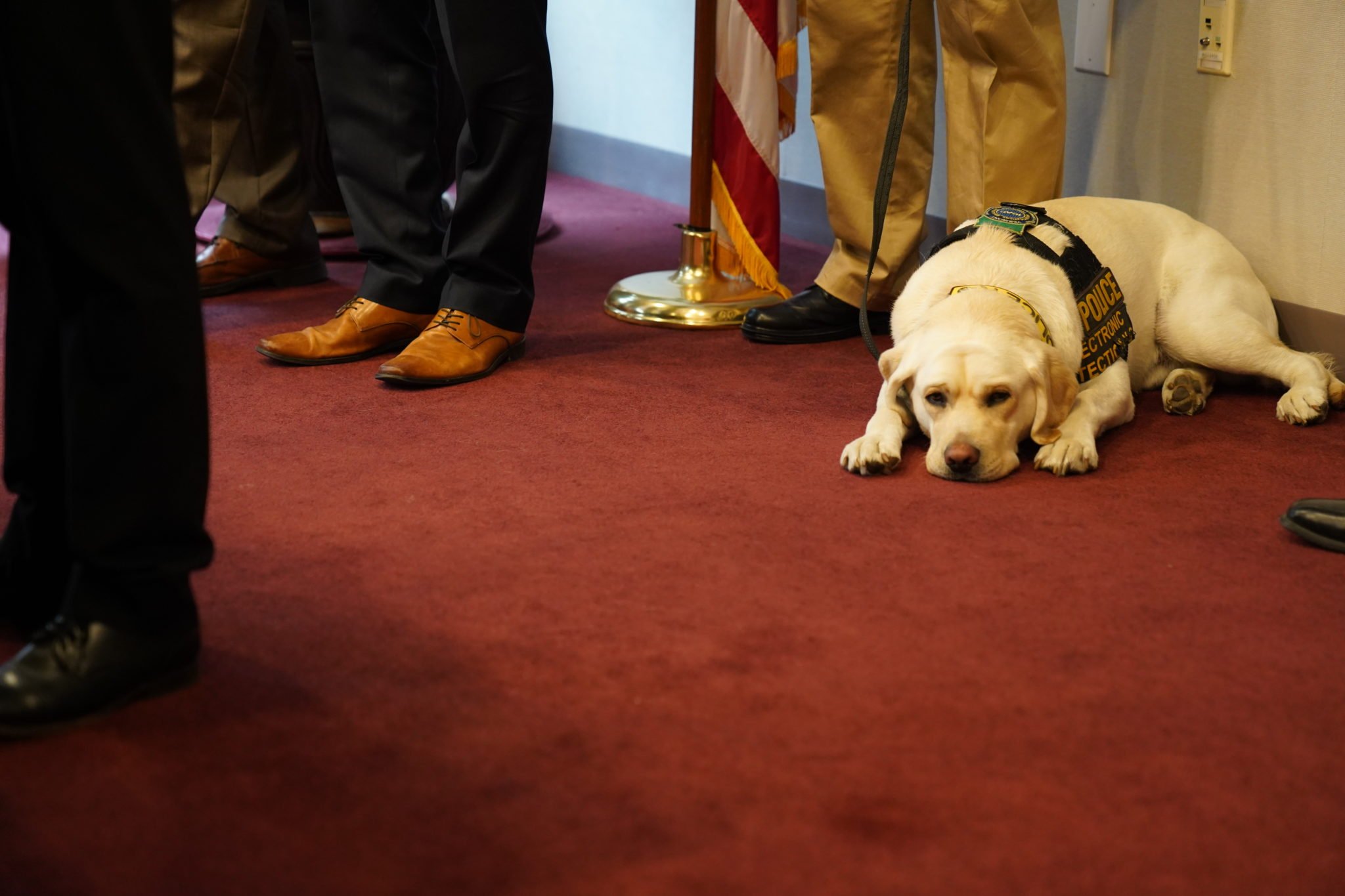Article by Shaun Robinson VT Digger Mar 27 2022
Georgia Casavant stood in front of her local school board this month and held up a black-and-white dress.
It was the dress she wore for her senior pictures, she said. Ask her parents, she continued, and they’ll probably pull out of their wallets a photo of her wearing it.
“This was my favorite dress,” Casavant told the Maple Run Unified School District board on March 16. “It was also the dress that I was wearing when I was sexually harassed, for the first time, by a staff member at BFA.”
Casavant, 18, said she was sexually harassed twice last fall by the same employee at Bellows Free Academy-St. Albans, a regional high school in Franklin County.
Casavant did not name the employee at the public meeting nor in an interview with VTDigger, but a school district report on the incident identifies him as Peter Jones, who is listed on the school’s website as a teacher in the library and media center. In a statement provided by his attorney, Jones confirmed some of the details of Casavant’s account but denied wrongdoing.
The two incidents took place in the first few months of the 2021-22 school year, Casavant said in an interview. In the first, Jones complimented and touched her dress, according to Casavant. Later in the fall, she said, Jones looked at her chest and asked if she was wearing anything underneath a sweatshirt she had on.
The second incident prompted a monthslong investigation, according to the high school senior and her father, John Casavant. Maple Run Superintendent Bill Kimball said one allegation ultimately was substantiated as a violation of the district’s Title IX policy.
Title IX is a federal law that prohibits discrimination based on sex in educational institutions that receive federal funding, such as public schools. It also covers sexual harassment and sexual violence.
John Casavant said the staff member was put on leave for about four months during the investigation, then returned to school earlier this month. In the weeks since, Georgia Casavant said, school officials have not given her the support she needs.
“The silence has been deafening,” John Casavant said at the school board’s March 16 meeting. His daughter, who was 17 when the incidents happened, sat nearby.
“It’s clear that either there’s been tacit or direct communication with staff to say, ‘Don’t talk about this,’” the father continued. “It leaves the victim all by herself. It’s wrong.”
VTDigger does not typically name victims of alleged sexual misconduct — particularly those who are underage. In this case, Georgia and John Casavant spoke about the incidents in public and agreed to be named in this story.
Before the Casavants spoke at the meeting, the board’s chair, Nilda Gonnella-French, read a statement asserting that the district takes allegations of sexual harassment seriously and followed all state and federal guidelines during the investigation.
Gonnella-French also said administrators are applying “progressive discipline,” though she said she could not speak specifically about the situation because it involves a student and district personnel. She then referred any questions to Kimball.
The superintendent declined to comment on specific disciplinary actions in response to an emailed question, but he said employees who do not engage in “professional behavior” could face discipline “up to and including termination.”
He also noted that since school employees are mostly union members, disciplinary actions could be grieved by an independent arbitrator. To avoid that process, Kimball said, the district has to impose discipline that is “appropriate to the misconduct.”
In a separate statement, Kimball said the district’s investigation “fully involved” both parties, including sharing evidence and witness statements with both sides and allowing both to comment before a decision was reached.
“Both the victim and the parents have been given supportive measures by the school through multiple personnel,” he said. “We remain committed to a safe and supportive learning environment for our students and staff.”
In the statement provided by Jones’ attorney, Robert Kaplan, the teacher said he “cooperated fully” with the district’s investigation, though he disagreed with the finding that he violated Title IX policy.
Jones, who is 54, said he is gay and “has no sexual interest in women, let alone children.” He also disputed the veracity of Georgia Casavant’s statements.
“The student’s public comments infer that I was preying on her for my own prurient interests,” he said. “Nothing could be further from the truth.”
‘Disgustingly uncomfortable’
According to Georgia Casavant, Jones first sexually harrassed her in the first few weeks of the school year. She was in the school’s library for study hall, she said, when he looked at her and said the dress she had on was “beautiful,” before touching the hem of it.
Casavant said the situation made her “very uncomfortable,” but she brushed it off, thinking that the staff member may have had good intentions.
Then, in late October, Casavant said she was walking into the library for study hall, when the same staff member looked “right at my chest” and asked if she was wearing anything underneath the green zip-up hoodie that she had on.
“I didn’t know what to say,” Casavant told VTDigger. She turned around and told the staff member she was not, Casavant said, after which he again looked at her chest and said, “I can tell.”
“It just made me disgustingly uncomfortable,” she said.
Georgia Casavant. Contributed photo.
Casavant immediately went out to her car and called her father, she said, who made a complaint about the incident to school administrators that day. John Casavant recalled his daughter crying on the phone. The school then launched an investigation, and the staff member was put on leave, according to John Casavant.
A Title IX decision maker for the district ultimately found that it was “undisputed” that Jones complimented and touched Georgia Casavant’s dress, as well as that Jones looked at her chest and asked if she was wearing anything underneath her sweatshirt, according to a report of the investigation obtained by VTDigger.
The investigation also found “that a preponderance of the evidence supports” that Jones looked at Casavant’s chest again after she told him she was not wearing anything underneath her hoodie, and that he said, “I can tell.”
In addition, the school official determined Jones’ “I can tell” comment in October constituted sexual harassment under Title IX guidelines.
According to the report, Jones was motivated to make the comment by Casavant’s gender, the comment was unwelcome and it “effectively denied (Casavant) equal access” to education as Jones “was paying attention to her body in a way that was uncomfortable to her.”
John Casavant noted that his daughter has missed full and partial days of school due to anxiety she has experienced since the second incident.
The investigation also found that Jones’ decision to touch Casavant’s dress was unwelcome, though it stated his action did not impede her access to education at the time.
Jones was out of school until early March, John Casavant said. The father feels that since Jones was found to have violated Title IX guidelines, he should no longer be employed at Bellows Free Academy.
“I, frankly, assumed that a staff member that sexually harassed a student wouldn’t come back to school,” John Casavant said.
In his statement, Jones said he commented on Georgia Casavant’s hoodie to make clear that it constituted a dress code violation and that he was trying to tell her she needed to zip up the sweatshirt.
“My choice of words was imprecise and not well considered,” he said. “That said, there was nothing sexual or sexualized in my comment to her.”
In the earlier incident, he said, “I had commented on this student’s dress and touched the hem of the dress which was quite pretty. I intended no offense by this and the student gave no indication that she was offended by my compliment.”
John Casavant said the investigation was completed in mid-February, at which point his family had an opportunity to file an appeal. They did not, he said, because they felt the report the investigation produced was accurate.
Jones said he did not appeal the result of the investigation, either, “so that the matter would be concluded.”
The Title IX decision maker recommended that Jones receive “training on sexual harassment” and “coaching on how to direct dress code violations to administration,” according to the report. However, the person noted that Kimball would be the one to determine any disciplinary actions.
In the first week of March, Georgia Casavant said, her family was told that Jones would be returning to school, though they only had two full days’ notice.
“I was mortified,” Georgia Casavant said at the school board meeting March 16. “I had two days to prepare myself to walk the same halls as my sexual harasser.”
‘A hostile environment’
In the weeks since Jones returned, Casavant said, she has felt school officials have done more to accommodate him than they have to accommodate her.
At first, officials moved her study hall from the library to a hallway that connects two buildings at the school, known as the “connector,” where she would not be supervised by Jones. The area has places to sit but can get loud as other students walk by, Casavant said, and she had to sit there by herself.
When Casavant’s family raised these concerns with administrators, her father said, the school agreed to let her resume her study hall in the library, though under the supervision of a different teacher.
Still, Georgia Casavant said any time she needs to access a library service such as checking out a book or printing something out, she must email the school’s assistant principal, who will then retrieve the item “when it’s convenient for her.”
Bellows Free Academy in St. Albans on June 21, 2021. File photo by Glenn Russell/VTDigger
“The burden is placed on me, even though I was a victim,” Casavant said.
Moreover, Casavant said that the morning after she spoke at the school board meeting, the staff member now assigned to supervise her study hall made a comment about the situation that she considered to be disparaging. Casavant asked that employee, who is an adviser to one of her clubs, if she could go see another teacher who had asked to see her.
“She looked at me and she said, ‘I don’t know. I wouldn’t want you to harass her,’” Casavant said. “I was very, very taken aback. And I just felt like this situation was never going to end.”
John Casavant said he raised that comment with the school’s principal and Kimball, the superintendent. According to Casavant, Kimball said the teacher made an “unfortunate word choice,” and wasn’t aware of the investigation that had taken place.
“I find that, almost, utterly disbelievable,” John Casavant said.
Georgia Casavant said the comment was another burden on top of her limited access to the library, which has made her feel like school is “a hostile environment.”
Soon after she posted about the alleged harassment on social media, she said, a number of students began planning demonstrations at the school. But staff members discouraged students from demonstrating, she said, and nothing ever took place.
In response to a question, Kimball said students are “free to protest,” though they may be disciplined if they miss class or disrupt school operations.
Casavant said the situation feels like an “elephant in the room.” Her teachers know what happened, she said, though none of them have discussed it with her.
“It definitely distracts me from my learning — a ton,” she said. “And that, I’d say, is the hardest part: that school doesn’t feel like school anymore.”
